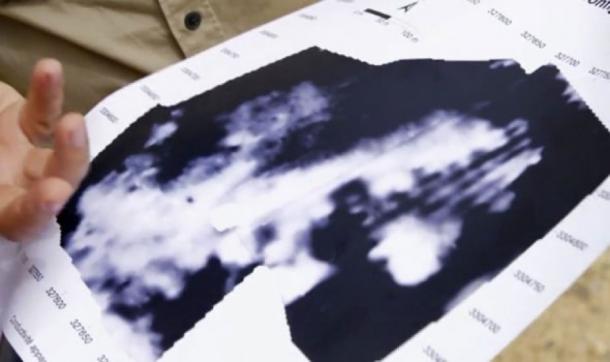Evidence of hidden pyramid discovered in Saqqara near Egypt’s oldest pyramid
A 30-year-old archeologist with work experience in Egypt made an impressive report.
It says it has found evidence of a secret pyramid deep below the desert of Saqqara. If it has proven to be correct, that could be said that Egypt has still many other pyramids.
According to the Daily Express, ‘ The last thirty years Dr. Vasko Dobrev has been exploring the area just 19 miles from Giza’s world-famous Pyramid.
During this time he made many amazing discoveries. The specialist has recently appeared on Channel 5, a British television channel. The series starred Tony Robinson, the popular TV character and is called “Opening the Great Tomb of Egypt.”
Development of the Pyramid
Two royal burial sites, located near the old Egyptian capital city of Memphis, were visited by Robinson and Dobrev. This area was crucial in the development of the step-pyramids during the Old Kingdom period.
The first of this type of construction was built here for Pharaoh Djoser of the 3rd Dynasty by the architect Imhotep, but these monuments were not perfected until the reign of Snefru (reigned 2613 to 2589 BC). This Pharaoh, who established the 4th dynasty, constructed three pyramids, of which the best known is the Red Pyramid.
Hunting for a Buried Pyramid
Dobrev claims to have found the remains of a pyramid. He believes that a ‘new Pyramid may lie buried beneath the sand in the area of Saqqara South,’ reports Curiosmos.com.
It is located north-west of the burial place of Pharaoh Pepi I , in Tabbet al-Guesh. Dobrev told Robinson that Saqqara still has more wonders to reveal.

The Egyptologist told the amazed British documentary-maker, that “ Saqqara boasts the first pyramid and a great many more,” according to the Daily Express.
Dobrov believes that all the members of a dynasty were buried here because of its close proximity to Memphis. Not all of the royal burials have been accounted for and he believes this means more pyramids are yet to be found.
The Egyptologist took Robinson to a flat plateau where he believes there are traces of a pyramid. It has remained undiscovered for millennia, he believes. Dobrov is confident that the base of a pyramid built for Pharaoh Userkare (23rd century BC) lies under the sand.
Buried in the Desert Sands
The Egyptologist argues that this pharaoh of the Sixth Dynasty did not live long enough for his pyramid to be built. Curiosmos.com quotes Dobrov saying that the monarch, “may have only had time to create the pyramid base .”
The expert believes that the location was likely the site of the Userkare pyramid because it is near his father’s and other family members’ burial places.
The Egyptologist revealed that there is an unidentified structure underneath the sand in the area that is likely to be man-made because it has right angles.
This was revealed by a scan of the location, conducted using the latest geophysical technology. The structure is estimated to measure 240 ft by 240 ft (80m by 80m), based on the scan. Curiosmos.com reports this is ‘precisely the dimension of a pyramid spanning back to the period when Userkare reigned’.

Traces of Userkare’s Pyramid?
It appears that the expert found a square structure that could very well be the base of a pyramid. Dobrov provided the British documentary maker with an image of a scan. This showed something unusual beneath the desert sands, however, it is debatable if it is conclusive proof.
There are no indications yet of any future plans to excavate the area where a lost pyramid may be buried. It seems likely that Dobrov will continue to work in the area as he has done for some three decades. If he is proven correct, there could be many more than the 120 currently known pyramids in Egypt.





